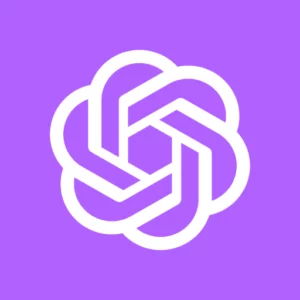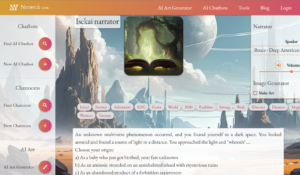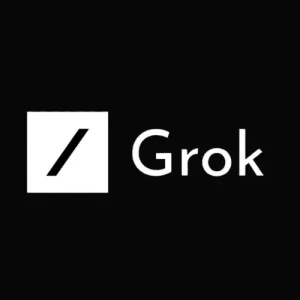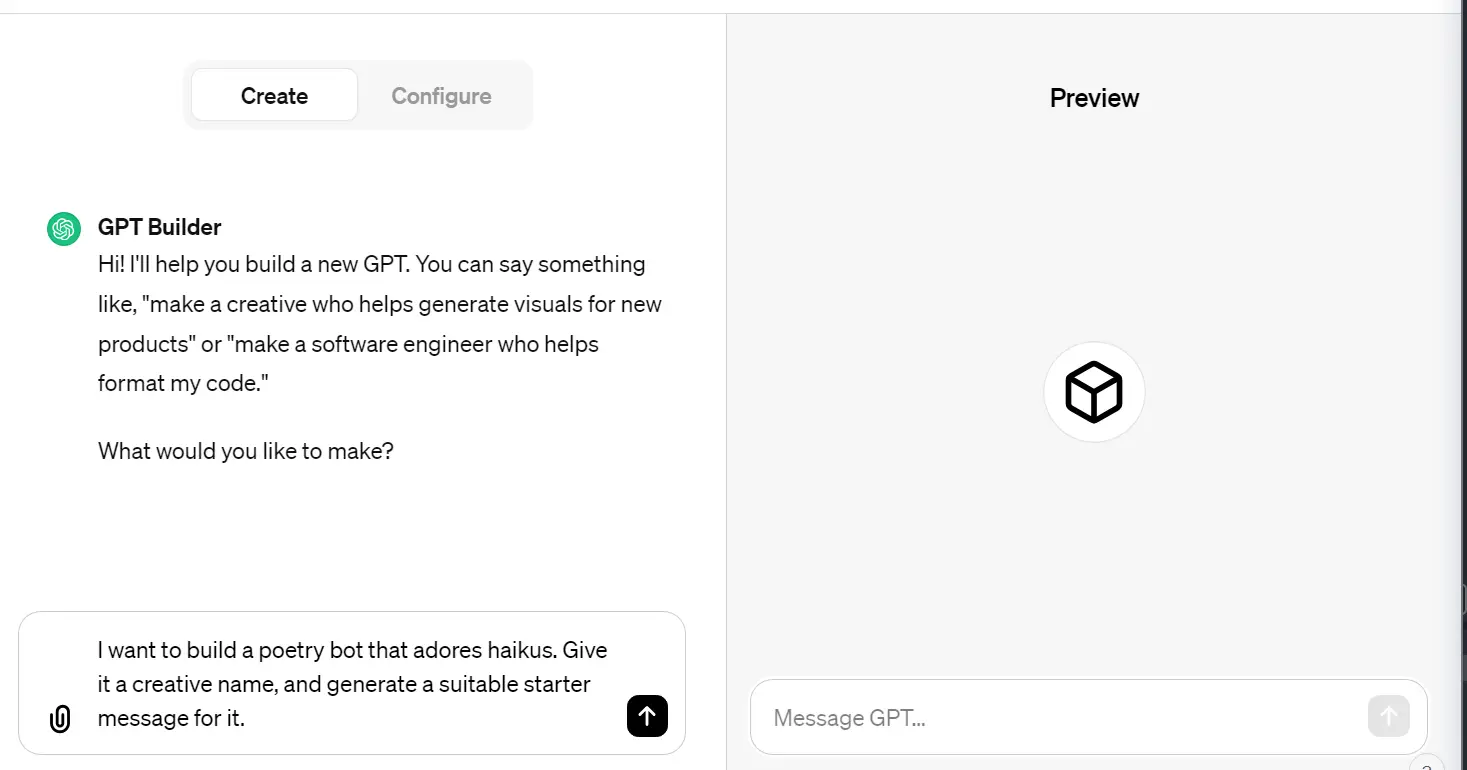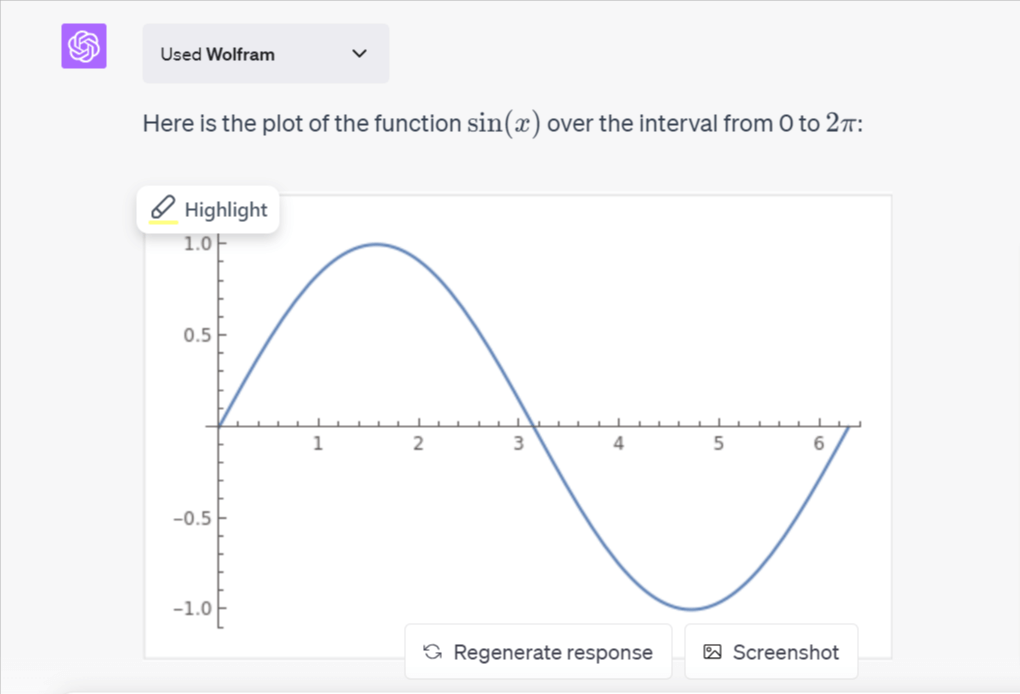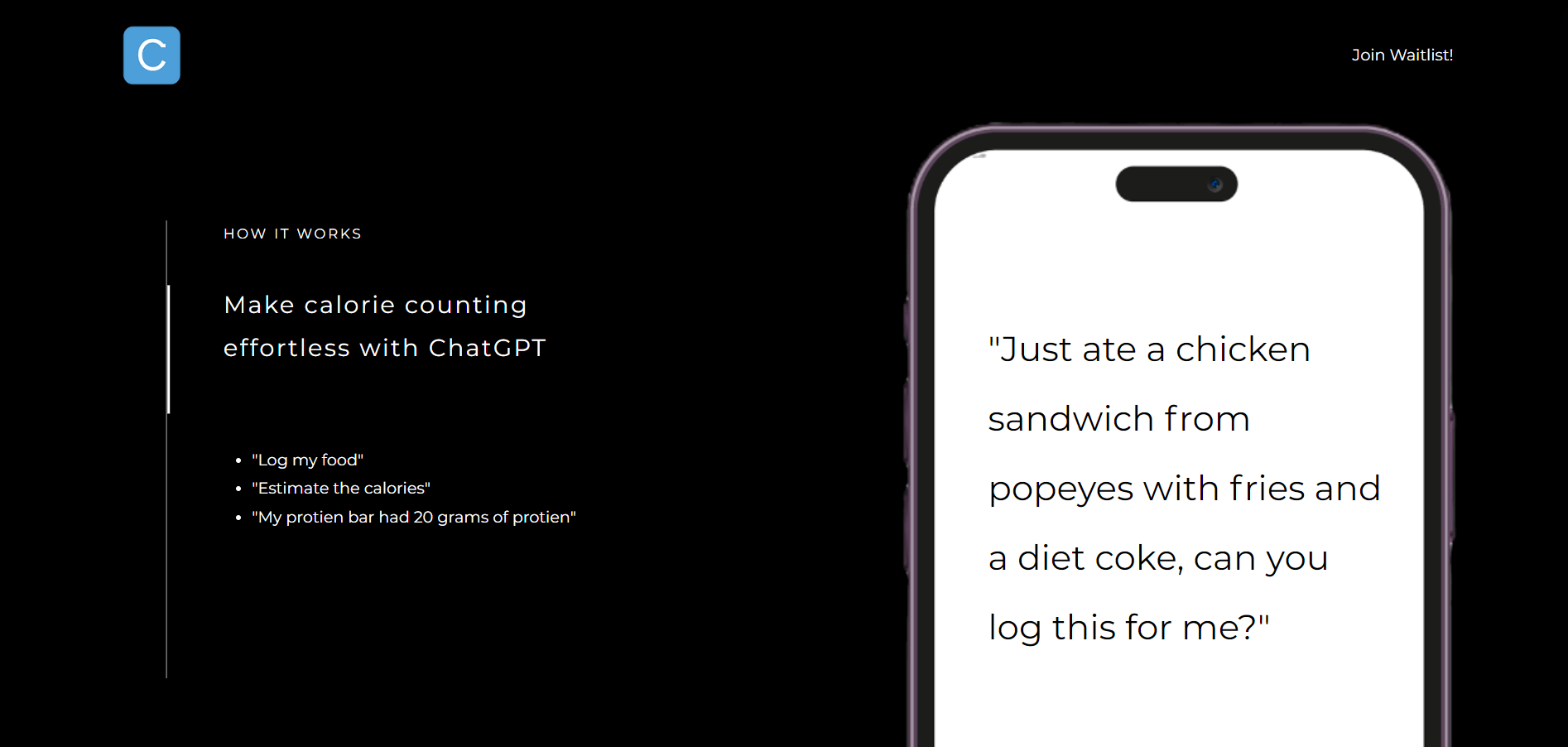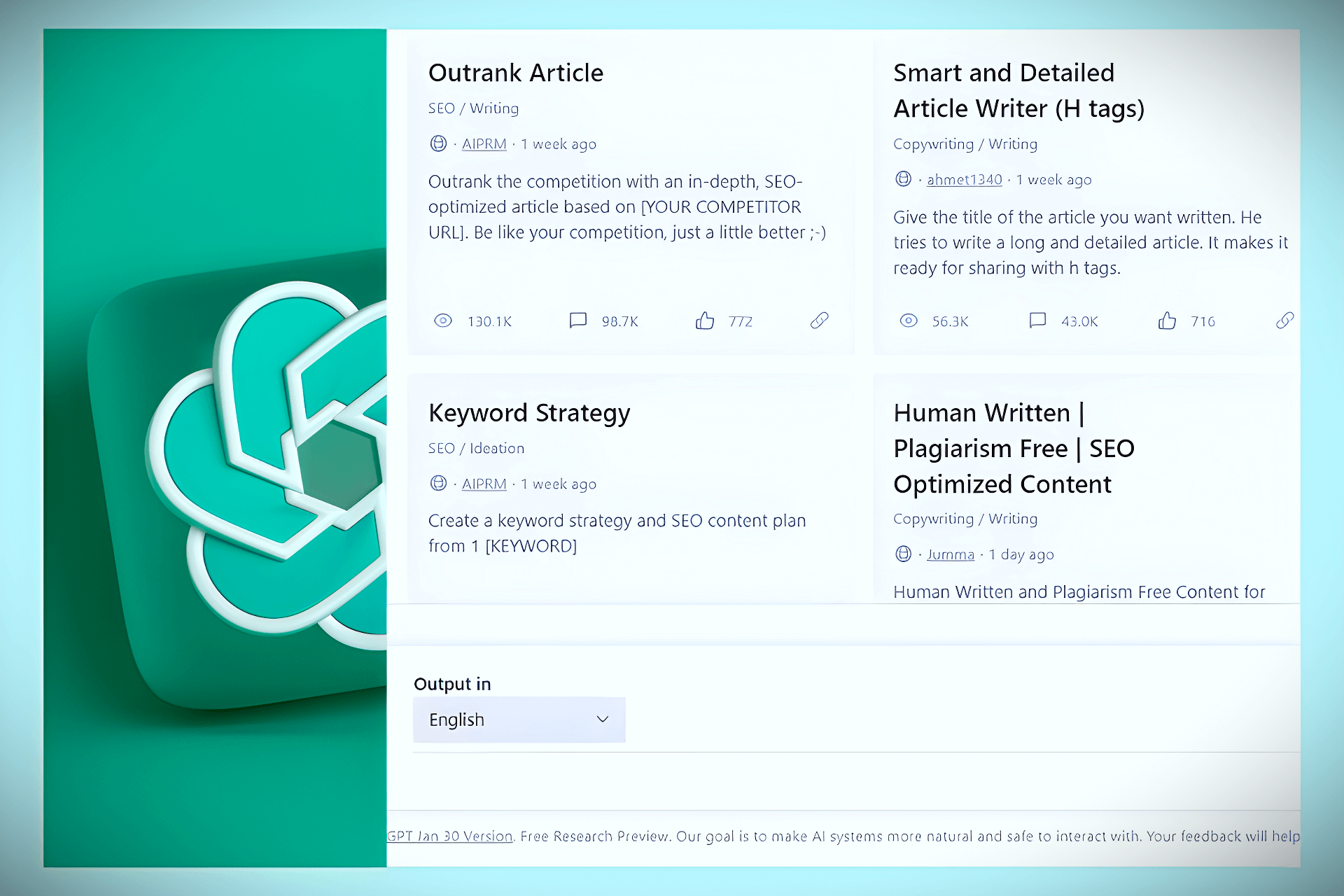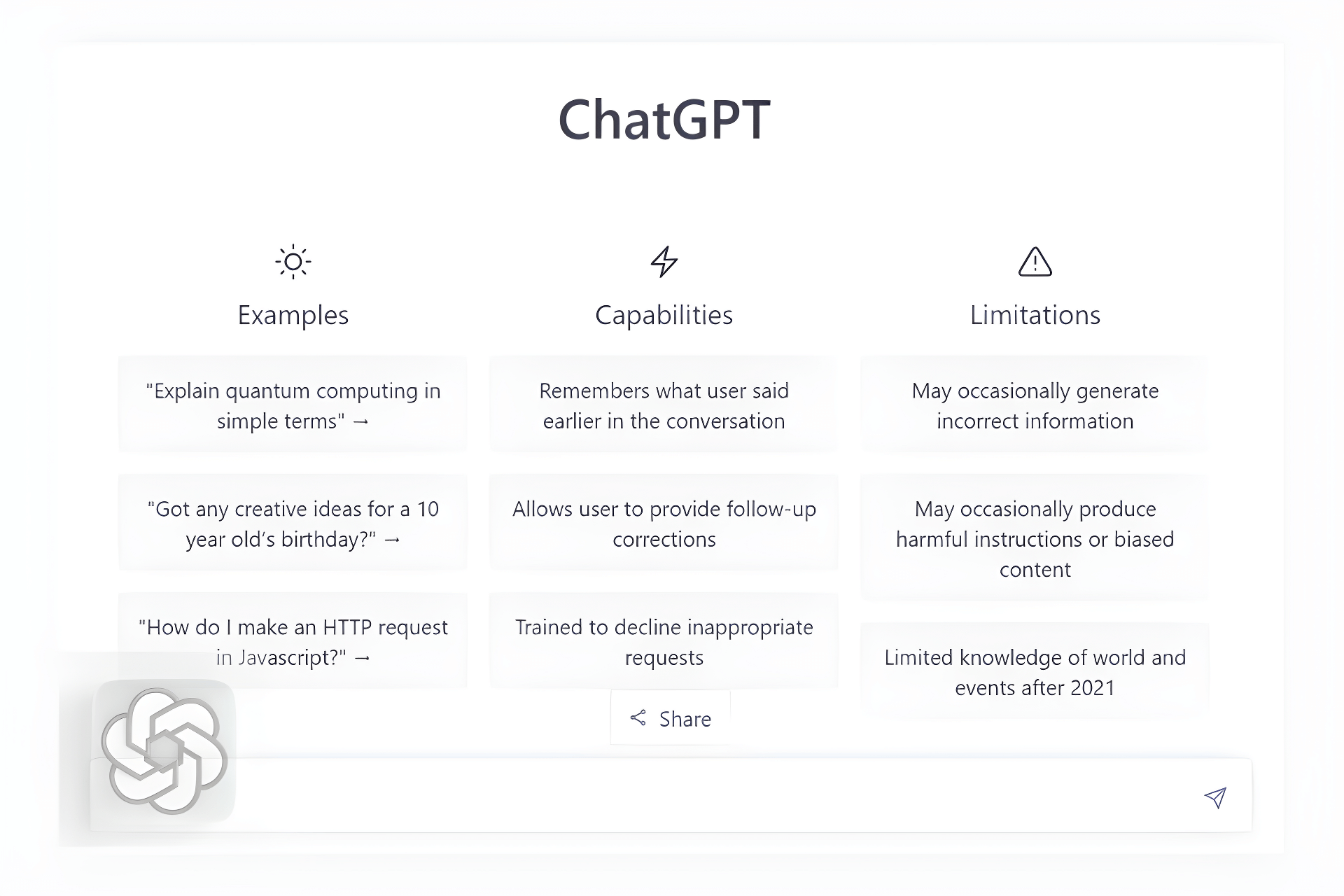ChatGPT
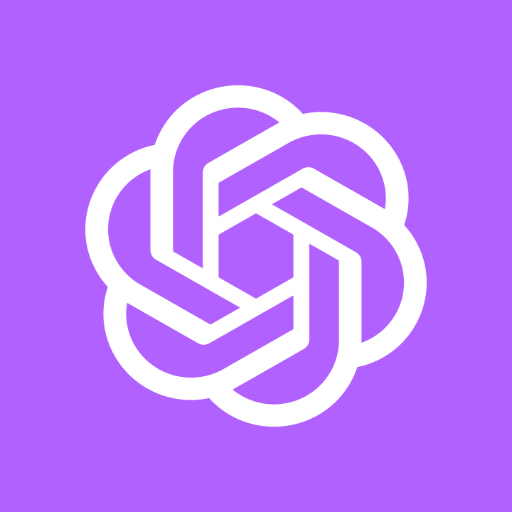
App types: Generative AI
Supported platforms:
Language Models
AI tools supported
Recommended for:
-
Ad copy
AI Image generation
AI training and fine-tuning
Blog post content
Brainstorming ideas
Content writing
Generating code
Product descriptions
Repurposing content
Social Media Copy
Summarizing documents
Quick overview
- Overwhelm level: Low (Easy to Use)
- ChatGPT-like tool: Not set
- Time Accessible: Accessible
- Has a Lifetime Deal: No
- Has an API: Yes
- Credit card required: Not set
- Contains ads?: Not Applicable
ChatGPT is a conversational AI model developed by OpenAI, launched in November 2022 that can understand and generate text in a way that mimics human conversation.
It is built on the GPT-4 architecture, which is a state-of-the-art model in natural language processing (NLP).
The primary goal of ChatGPT is to assist users in generating text for various purposes, such as answering questions, creating content, and providing recommendations.
These language models have been fine-tuned with vast amounts of data and reinforced by human feedback to enhance their conversational skills and accuracy.
This capability allows it to engage in detailed and coherent conversations, making it useful for a variety of applications such as customer service, content creation, and educational support.
The model behind ChatGPT is trained using machine learning algorithms that process vast amounts of text data. This training enables it to understand and generate text in a way that mimics human conversation.
ChatGPT can answer questions, provide explanations, assist with writing tasks, and even generate code, making it a versatile tool for both personal and professional use
- Evolution: From GPT-3.5 to GPT-4, the AI has seen significant improvements in understanding and generating human-like text, displaying a notable jump in nuanced understanding and complex problem-solving abilities.
- Safety and limitations: While leaps have been made, challenges like mitigating potential fraud or reducing “hallucinations” — instances where the model generates incorrect or nonsensical information – are still actively addressed through rigorous content policy updates and safety measures.
- Customization for developers: An API is available, allowing developers to integrate ChatGPT into applications, craft custom GPTs, and tap into its functionalities to create unique solutions tailored to various needs.
- Education and AGI: This tool is not only a step towards achieving advanced AI education resources but is also a milestone in the journey towards artificial general intelligence (AGI).
- Subscription and benefits: OpenAI introduced a subscription plan, offering priority access and additional benefits to subscribers, a move intended to provide an enhanced service for its customers. Learn more about ChatGPT Plus
- Use cases: As a versatile chatbot, ChatGPT finds its utility across diverse fields including, but not limited to, education, customer service, and content creation.
ChatGPT pricing
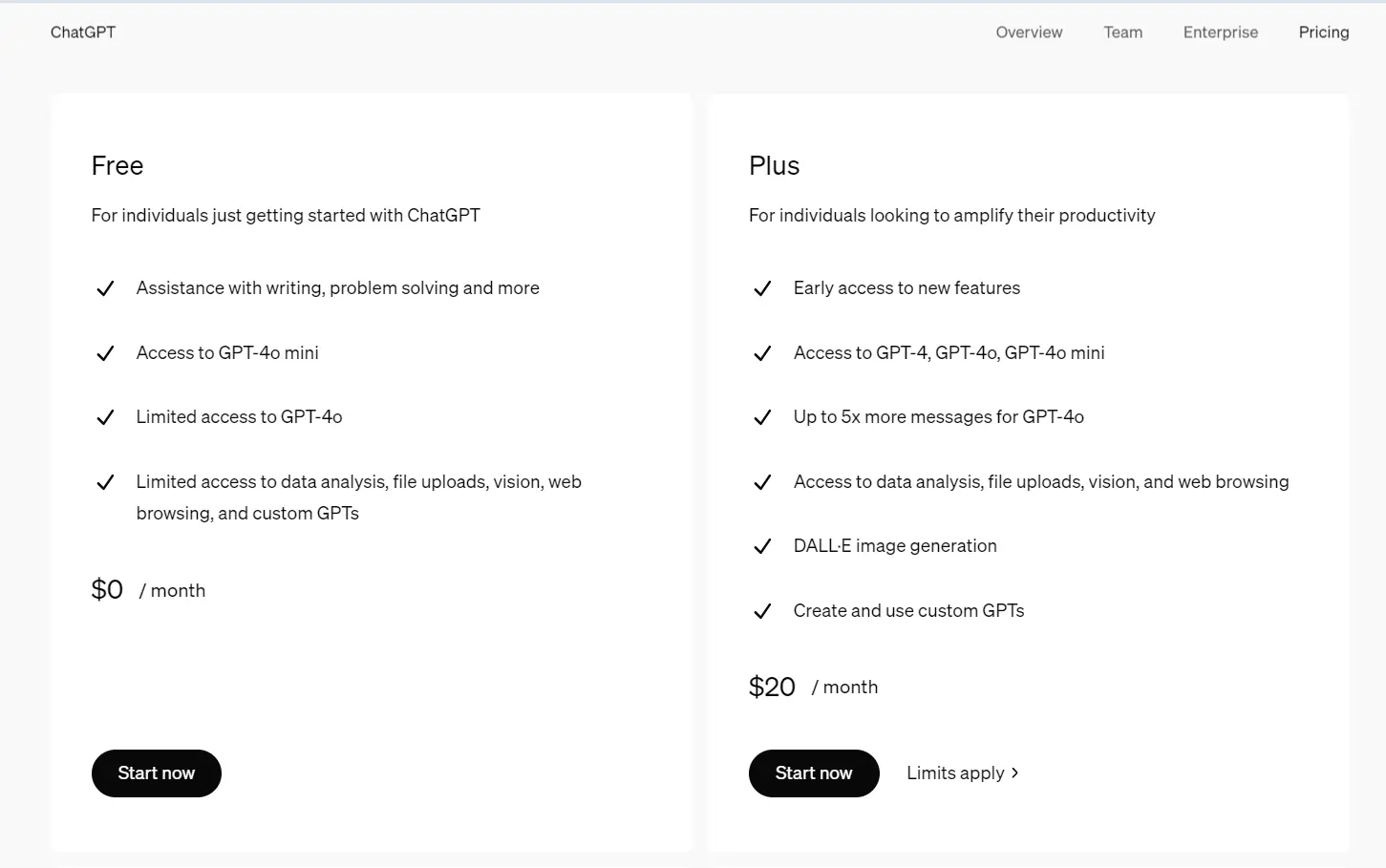
Elementor AI

Main features of ChatGPT include:
Multimodal capabilities
ChatGPT can now process and generate responses based on text, images, and voice inputs. This means you can interact with ChatGPT more naturally:
- Text: Type your questions and get text-based answers.
- Images: Upload photos and get detailed descriptions or troubleshooting advice.
- Voice: Speak to ChatGPT and receive spoken responses.
For example, you can take a picture of a menu in a different language, and ChatGPT will translate it for you, explain the food's history, and even recommend dishes.
Voice interaction
Powered by a sophisticated text-to-speech model and Whisper, an open-source speech recognition system, ChatGPT can now engage in realistic voice conversations.
This includes generating human-like audio and accurately transcribing your spoken words into text.
Key benefits:
- Human-like audio: ChatGPT sounds more natural and engaging.
- Accurate transcription: Converts your speech to text precisely.
- Interactive conversations: Makes it easy to have back-and-forth discussions.
Custom instructions
You can now personalize your interactions with ChatGPT by providing specific guidelines and preferences. This makes the responses more aligned with your needs and preferences.
Setting custom instructions is simple:
- Click on your name.
- Select 'Custom instructions.'
- Add your preferences and save.
This feature is rolling out to all users, ensuring everyone can benefit from tailored interactions.
File uploads
Users can upload files for ChatGPT to summarize, write about, or analyze.
This enhances its ability to assist with document-related tasks, making it a powerful tool for students, professionals, and researchers.
Benefits:
- Summarization: Get concise summaries of lengthy documents.
- Writing assistance: Improve your writing with AI-generated suggestions.
- Analysis: Gain insights from complex files quickly.
Voice and image capabilities rollout
These advanced features are being gradually introduced to ensure safety and refine risk mitigations. This approach helps address potential risks while enhancing the tool's utility.
Key points:
- Safe deployment: Gradual rollout to manage risks.
- User feedback: Continuous improvement based on user experiences.
- Enhanced utility: Advanced features for more practical use cases.
New desktop app
ChatGPT now offers a streamlined desktop app for macOS, which integrates seamlessly into your workflow.
With a simple keyboard shortcut (Option + Space), you can instantly ask ChatGPT a question or discuss screenshots directly within the app.
A Windows version is also in development.
Desktop app features:
- Quick access: Use keyboard shortcuts to interact with ChatGPT.
- Screenshot discussion: Analyze and discuss screenshots easily.
- Voice conversations: Engage in voice interactions directly from your computer.
API access
The ChatGPT API allows developers to integrate the powerful capabilities of GPT models into their applications, services, and workflows
. This provides a flexible and scalable way to leverage AI for a wide range of use cases.
Key features of the API
- Scalability: The API can handle a high volume of requests, making it suitable for applications with varying levels of demand.
- Flexibility: Developers can use the API to create a diverse array of applications, from chatbots and virtual assistants to content generation tools and data analysis systems.
- Advanced capabilities: The API provides access to the latest advancements in natural language processing, ensuring that applications can understand and generate human-like text.
How to use the ChatGPT API
- Sign up: Developers need to sign up for an API key on the OpenAI platform.
- Integration: Use the provided API key to integrate the GPT model into your application. This involves making HTTP requests to the API endpoint with the desired input text and receiving generated responses.
- Customization: Developers can adjust parameters such as temperature, max tokens, and top_p to fine-tune the behavior of the model’s responses.
Custom GPTs
Custom GPTs refer to tailored versions of the standard GPT model designed to meet specific user needs or preferences.
These customized models are fine-tuned on particular datasets or programmed with unique instructions to perform specialized tasks, offering a more personalized and relevant user experience.
Benefits of Custom GPTs
- Personalization: Custom GPTs can be tailored to understand and generate responses based on specific terminology or context relevant to a particular industry, project, or personal preference.
- Enhanced performance: By focusing on a narrower domain, custom GPTs can provide more accurate and contextually appropriate responses.
- Task-specific capabilities: These models can be programmed to handle specific tasks such as customer support, content creation, technical troubleshooting, or educational tutoring.
How to create custom GPTs
Creating a custom GPT involves fine-tuning the base model on a curated dataset that reflects the desired scope of knowledge or functionality. The steps typically include:
- Dataset collection: Gathering a large amount of text data relevant to the specific task or domain.
- Fine-tuning: Training the GPT model on this dataset to adapt its responses to the specific context.
- Testing and iteration: Evaluating the performance of the custom GPT and making necessary adjustments to improve accuracy and relevance.
ChatGPT usecases
Content creation
- Blog Writing: Generate engaging and informative blog posts on various topics, including finance, technology, health, and lifestyle.
- Copywriting: Create compelling marketing copy for advertisements, social media, email campaigns, and product descriptions.
- Storytelling: Develop creative stories, including fiction, thrillers, and humorous narratives tailored to specific audiences.
- Scriptwriting: Write scripts for videos, podcasts, or animations, ensuring engaging dialogue and plot development.
- SEO Optimization: Generate SEO-friendly content with appropriate keywords, meta descriptions, and tags.
Customer support
Custom GPTs can be trained to handle specific customer service queries, providing accurate and contextually relevant responses.
Using the API, these models can be integrated into chatbots on websites and apps, improving customer experience and reducing response times.
- Chatbots: Provide automated customer service responses, handling common queries, troubleshooting, and guiding users through processes.
- Email support: Draft personalized email responses to customer inquiries, complaints, or feedback.
- FAQ generation: Create comprehensive FAQ sections for websites, addressing common customer concerns and questions.
Education and training
- Tutoring: Offer explanations and assistance on various subjects, including math, science, literature, and history.
- Lesson Planning: Develop detailed lesson plans and educational materials for teachers and instructors.
- Language Learning: Provide practice conversations, grammar explanations, and vocabulary exercises for language learners.
Business and professional use
- Report writing: Assist in drafting business reports, proposals, and presentations with clear and concise content.
- Meeting summaries: Generate summaries and action points from meeting transcripts or notes.
- Market research: Provide insights and summaries of market trends, competitor analysis, and consumer behavior.
Technical assistance
- Programming help: Provide code snippets, debugging assistance, and explanations for various programming languages.
- Tech troubleshooting: Offer solutions and guidance for common technical issues with software, hardware, or devices.
- Documentation: Generate technical documentation, user manuals, and how-to guides for software and applications.
Research and analysis
- Data analysis: Summarize and interpret data from research studies, surveys, or experiments.
- Academic research: Assist in gathering information, generating hypotheses, and writing academic papers or theses.
- Trend analysis: Identify and explain trends in various industries, such as technology, finance, and healthcare.
Personal Use
- Life coaching: Offer advice and suggestions on personal development, goal setting, and time management.
- Health and wellness: Provide tips and information on maintaining a healthy lifestyle, including exercise, nutrition, and mental health.
- Event planning: Assist in planning events, from small gatherings to large conferences, with detailed itineraries and checklists.
ChatGPT FAQs
Is the use of ChatGPT considered academic misconduct?
What happened to the ChatGPT plugins beta?
Is ChatGPT used in higher education?
What is ChatGPT?
Any Review Fields Not Found
About OpenAI
OpenAI is an artificial intelligence research and deployment company founded in December 2015 and headquartered in San Francisco, California.
Its mission is to ensure that artificial general intelligence (AGI) benefits all of humanity. OpenAI conducts cutting-edge research in AI and develops advanced AI technologies.
The company is known for creating powerful models like GPT-3.5, GPT-4, GPT-4o, DALL-E 3, and possibly soon, GPT-5, which are used in various applications ranging from natural language processing to robotics.
OpenAI operates as a capped-profit organization, meaning it aims to balance profitability with its mission-driven goals. It has a significant partnership with Microsoft, which includes a multibillion-dollar investment, yet remains governed by the OpenAI Nonprofit to ensure adherence to its mission



